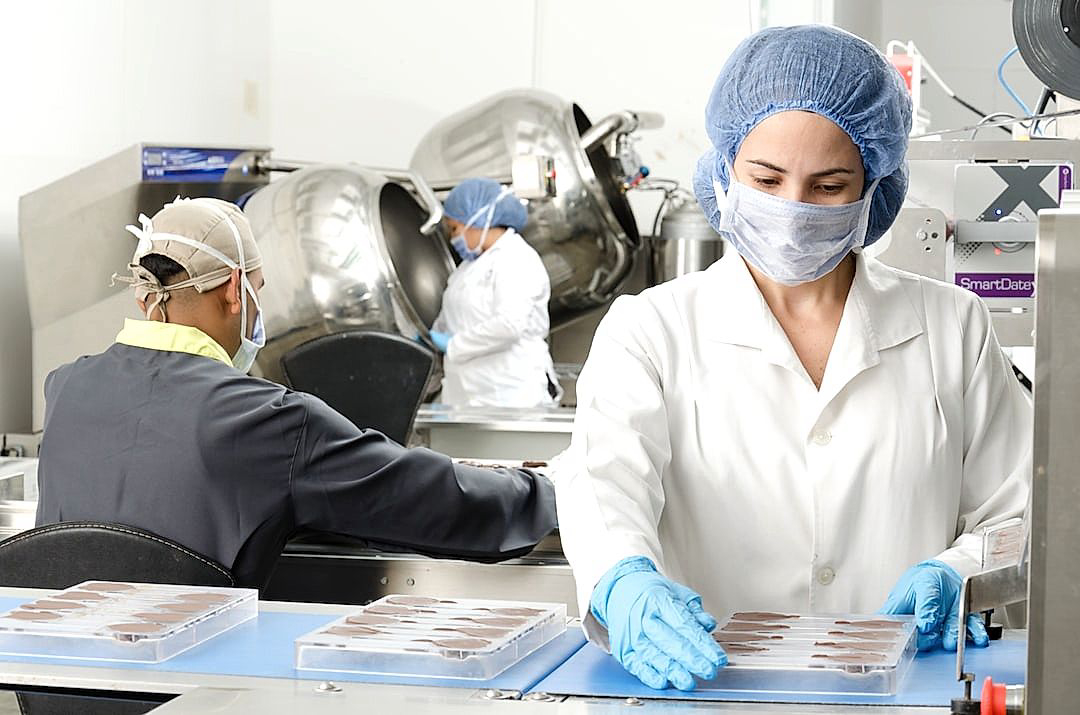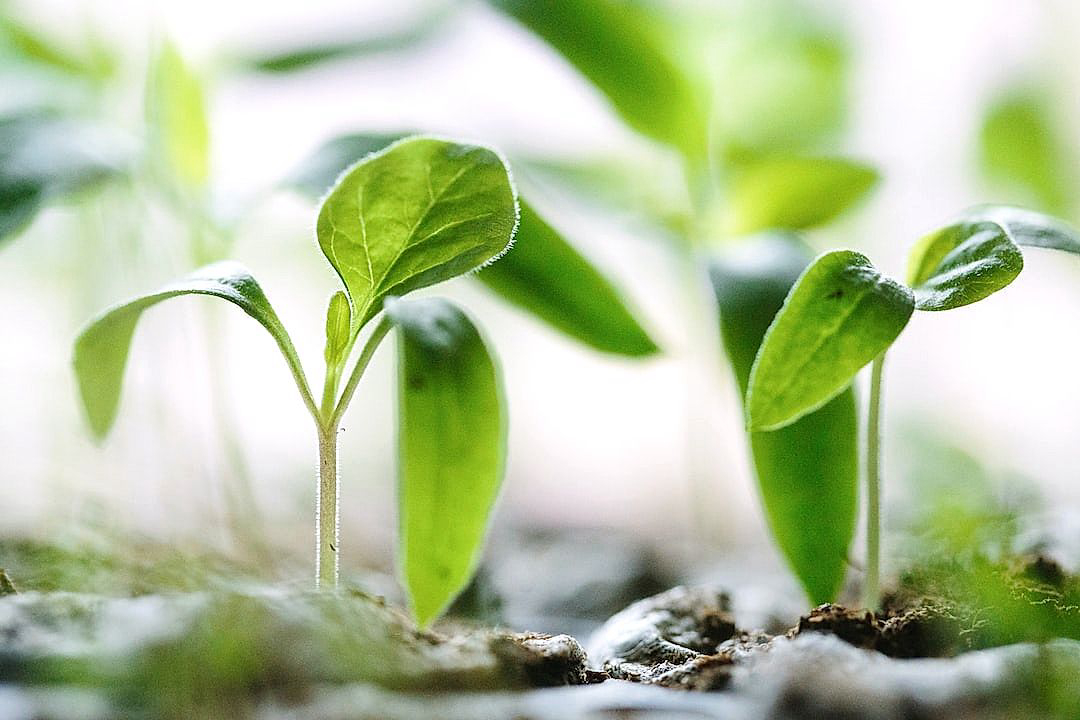Pesticides have long been a controversial topic in agriculture, with demands for high yields often clashing with the need for environmentally responsible farming practices.
It is critical to balance the necessity for pest control with an overarching commitment to safe, viable produce.
As the emphasis on consumption of organic fruits and vegetables grows worldwide, so does the need for improved methods of pesticide management.
This article seeks to shed light on various pesticide management strategies that ensure safety through all stages of farming.
The aim is to provide a comprehensive understanding of the subject, encouraging informed decisions for growers, food industry professionals, and consumers alike.
We identify key facets of sustainable practices, discussing their implementation and effectiveness in ensuring healthier, safer produce.
Pesticide Management Techniques For Safe Produce
1. Use Organic, Eco-Friendly Pesticides
In the realm of pesticide management, the use of organic, eco-friendly pesticides has garnered substantial attention.
Chemical pesticides, while effective, are often linked to environmental degradation and health risks to both humans and non-target organisms.
Consequently, many agriculturalists and horticulturists are shifting towards organic, eco-friendly pesticides.
These pesticides, derived mainly from natural resources, are deemed safer for the environment and non-target species.
Neem oil, pyrethrum, and diatomaceous earth are common examples of such pesticides.
Neem oil is an organic pesticide derived from the neem tree and is effective against a wide range of pests.
Pyrethrum, derived from certain types of chrysanthemum flowers, is a potent insecticide that affects the nervous systems of insects.
Diatomaceous earth, a natural sedimentary rock, damages the exoskeleton of pests leading to their death.
By using these organic, eco-friendly pesticides, farmers can expect to manage pests without causing harm to the wider environment.
Moreover, such pesticides often decompose more readily than their chemical counterparts, reducing the chance of residual toxicity or accumulation in the environment or food chain.
They are also less likely to harm beneficial insects, such as bees and butterflies, that contribute to pollination and the overall balance of the ecosystem.
Notably, organic, eco-friendly pesticides should be used responsibly as they could still pose risks if misused or overused.
The ideal practice would be to follow recommended application rates and timing to ensure effectiveness and sustainability.
However, organic, eco-friendly pesticides can generally be considered a safer and more sustainable choice in pesticide management.
Adopting these pesticides reflects an important step towards sustainable farming and contributes to the long-term goal of producing safe, healthy, and environmentally friendly produce.
2. Rotate crops to disrupt pest cycles.
Rotating crops refers to the practice of systematically changing the types of crops grown in a particular field from year to year.
This technique can be a fundamental part of a comprehensive pest management strategy.
By disrupting pest reproduction cycles, crop rotation has the potential to significantly reduce pest populations.
The basic principle behind this approach is that most pests are host-specific, meaning that they rely on a single crop or a closely related group of crops for their food and habitat .
When these conditions change due to rotation, pests are unable to complete their life cycles and may decrease in number or disappear entirely.
Moreover, when one crop is replaced with a different one, pests related to the previous crop often find it difficult to survive, since the new crop may not be suitable for their nutritional needs or life cycle.
This method of pest control entails planning your crop rotation carefully to ensure that each successive crop is unsuitable for the pests prevalent in the previous crop.
For instance, if a field is infested with beetles that predominantly attack potato crops, planting a non-host crop like corn the following year can break the beetle’s life cycle.
Over time, this can lower the overall pest pressure in the field, reducing the need for pesticides.
Crop rotation can also bring additional benefits to the soil and crop health.
By varying the crops grown on a patch of land, farmers can prevent the depletion of essential nutrients in the soil.
This can enhance the fertility of the soil, increasing crop yields, and help farmers achieve a healthy, sustainable farming system.
It’s vital to remember, though, that to accomplish successful pest control through crop rotation, one must have a thorough understanding of the life cycles of targeted pests and the host range of these pests.
Lastly, it’s crucial to consider factors such as the market demand for crops, soil and climate requirements, crop rotation length, and the availability of suitable alternative crops when planning rotation schedules.
Effective crop rotation for pest management, therefore, requires careful planning and a sound understanding of the pests and crops involved.
3. Control Weeds to Eliminate Pest Habitats
The importance of managing weeds within cropland extends beyond simply aesthetic considerations.
Weeds serve as a home for various pests, including insects and diseases that can infest and damage crops.
When a field is overrun by weeds, these pests have an ideal environment to proliferate and invade the surrounding crops.
Therefore, weed control is an essential aspect of effective pesticide management.
Successful weed control can help to significantly diminish pest populations, thereby limiting the need for pesticide application.
One of the key steps in controlling weeds is preventing their establishment in the first place.
To do this, it’s necessary to employ various cultural and physical strategies, such as crop rotation, cover cropping, and timely cultivation.
Another method is the application of organic, eco-friendly herbicides that are designed to curb weed growth without causing harm to the crops or surrounding environment.
The timing and method of application can greatly impact the efficacy of these products, so it’s crucial to follow the recommended usage guidelines.
Other techniques such as mowing, hand-weeding, and mulching can also be employed to help keep weed populations under control.
By eliminating these pest habitats, farmers can create a less conducive environment for pest invasion.
However, it’s important to note that weed control is not a one-time task, but needs to be a consistent part of the whole crop management strategy.
In some cases, due to a variety of factors such as weed resistance, weather conditions, or other unforeseen challenges, total weed control may not always be possible.
Despite this, maintaining a concerted effort to manage weed growth will undoubtedly lead to a reduction in pest presence.
Therefore, effective weed control echoes the broader goal of pesticide management: to maximize crop productivity while minimizing harm to the environment and human health.
4. Introduce Beneficial Insects to Control Pests
One beneficial way in the natural control of pests is the introduction of beneficial insects into the crops.
These insects, often referred to as beneficials, are those that attack, kill, or otherwise reduce the populations of pest insects.
For instance, ladybugs are renowned for their appetite for aphids, a common crop pest.
Predatory beetles, parasitic wasps, and lacewings are also examples of insects that are helpful in controlling pests.
Many of these insects can be purchased from commercial suppliers and introduced directly to your crops.
Beneficial insects not only help in controlling pests, but they also contribute to maintaining the ecosystem’s balance.
Therefore, understanding these insects and how to attract or introduce them to your fields can be an essential part of your pest management strategy.
For example, planting flowering plants can attract certain beneficial insects as they provide nectar and pollen, an essential part of some beneficial insects’ diet.
Also, providing a habitat for these insects is crucial, whether it be in the form of certain types of plants or specific structures placed in the field.
There are also certain techniques and conditions that favor the survival of these beneficial insects.
For example, limiting the use of broad-spectrum pesticides which can harm beneficial insects is a recommended practice.
Also, maintaining a diversity of plant species can help support a variety of these insects.
In addition, farmers can propagate beneficial insects by providing shelter and breeding sites in the form of insect hotels, compost piles or hedgerows.
The introduction of beneficial insects is not just about pest control; it’s about creating a sustainable ecosystem within your fields.
Implementing practices that encourage these insects’ survival and reproduction can result in long-term benefits for your pest management efforts and the overall health of your crops.
5. Choose crops resistant to common pests.
Farmers and gardeners alike have been gathering knowledge on plant resistance to pests for centuries.
They’ve observed which crops, due to their natural inherent abilities, attract fewer pests or seem less affected by them.
This knowledge, combined with modern plant breeding techniques, allows for the development of plant varieties highly resistant to specific pests.
The genetic resistance of a crop to pests is a natural, eco-friendly way to manage pests and reduce pesticide use.
Choosing crop species or varieties resistant to pests is a cornerstone of integrated pest management and one of the most effective pesticide management techniques.
This method involves aiming to create a balance between the pest and the crop, rather than trying to completely eradicate the pest.
When cultivating resistant crops, it is essential to remember that resistance does not mean immunity.
Even if a plant is resistant, it may still suffer from the influence of pests, but the damage will generally be less severe and more manageable.
If coupled with other pest management practices like crop rotation and beneficial insects, growing resistant crops can significantly reduce the need for chemical interventions.
It’s also worth noting that even within one species of plant, the level of resistance to pests can vary widely depending on the specific crop variety.
So, careful research should be undertaken to choose the right varieties for your specific area and the pests you commonly face.
Seed catalogs, agricultural extension services, and local horticultural societies can be great resources for finding pest-resistant varieties.
Employing this strategy could result in healthier crops, less time and money spent on pest controls, and a more harmonious natural environment in your farm or garden.
Choosing crops resistant to pests does not eliminate the need for other pest management strategies, but it can make them much more effective.
Embracing this technique is a step towards a more sustainable and bio-diverse agricultural practice.
6. Regularly Monitor and Inspect Crops
One essential component of successful pesticide management is the regular monitoring and inspection of crops.
Conducting regular inspections allows growers to identify pest problems at their onset, when they are most manageable.
Through these inspections, farmers can detect early signs of infestations such as chewed leaves, tracks, droppings, or even the pests themselves.
Monitoring and inspecting will help in determining which pest has infested the crops and in estimating the extent of the infestation.
By understanding the intensity and stage of pest infestation, farmers can optimize their pesticide applications, avoiding unnecessary use and thereby reducing the overall amount of pesticides introduced into the environment.
Inspections should also include soil tests since many pests live in the soil and can damage crops from beneath the ground surface.
Furthermore, different pests are attracted to different types of crops in various stages of growth; frequent monitoring allows for a proactive and responsive approach towards crop protection.
Another crucial aspect of monitoring and inspecting crops is identifying and observing beneficial insects that help in natural pest control.
Keeping an eye on weather conditions is a vital part of inspections as certain weather conditions can lead to increased pest populations.
By observing changes in wind direction, rainfall, temperature, and humidity, farmers can predict potential increases in pest populations and take preventive measures.
In addition to visual inspections, it is also important to engage in record-keeping for greater effectiveness.
Keeping detailed records of what was observed during each inspection, the actions taken, and the results achieved could be useful for future pest management decisions.
Regular training of staff in accurate pest identification and monitoring techniques should also be a priority to maintain a high level of quality control.
It’s essential to consider that monitoring and inspecting crops should not only involve checking the appearance of the crops but also evaluating their performance in terms of yield or quality, as pests can reduce the quality and quantity of the produce.
This way, monitoring and inspecting processes become an essential tool in ensuring the safety and sustainability of the produce by optimizing pesticide use.
7. Follow recommended pesticide application rates.
One of the key pesticide management techniques pertinent to the safe production of crops is the adherence to the recommended pesticide application rates.
In order to utilize pesticides in a manner that supports both a healthy ecosystem and optimum produce yield, it is crucial to follow the recommended pesticide application rates set forth by regulatory bodies and product manufacturers.
These guidelines are in place to ensure the efficient use of pesticides, promote environmental sustainability, and most importantly, safeguard crop health and end-product safety for consumption.
By following recommended pesticide application rates, farmers can ensure the sustainability and safety of their crops, whilst still effectively managing pests.
It is a common misconception that more is better when it comes to pesticide use, which can actually lead to detrimental effects on crop health and the surrounding environment.
Over-application of pesticides can cause pests to build resistance, thus rendering the pesticides less effective and deterring the goal of pest management.
Environmentally, excessive pesticide use can lead to contamination of water sources and a reduction in biodiversity.
Understanding and adhering to recommended application volumes, frequency, and timing can prevent these issues from occurring, and in turn, promote the successful production of safe produce.
In addition to this, it is also important that farmers understand the type of pesticide they are using and its specific application requirements, as different pesticides have varying levels of toxicity and rates of decomposition.
These factors must be considered in order to ensure the pesticide does not remain on the produce for longer than intended, therefore posing a risk to consumer health.
To that end, farmers should always take into account the pre-harvest interval, which dictates the amount of time that must pass between the last pesticide application and the harvest.
Each pesticide comes with its own pre-harvest interval which, if adhered to, ensures that the pesticide residues on the harvested produce are within the legal and safe limits set forth by health and safety regulations.
By tailoring their pesticide application methods and timings, farmers can ensure that pests are combated effectively and sustainably, while ensuring the safety and quality of their produce.
In all, the key to using pesticides effectively without causing unwanted harm to the environment or the consumer lies in understanding and following the recommended application rates for each specific pesticide.
By doing so, farmers can continue to enjoy the benefits of pesticide use in combatting pests, while ensuring that their produce remains safe and high-quality for consumption.
The Bottom Line
Environmentally responsible pest management is undoubtedly a necessity in contemporary farming.
Utilizing organic, eco-friendly pesticides not only lessens the detrimental effects on our ecosystem but also promotes a healthier crop yield.
Interrupting pest cycles through rotating crops, controlling weed growth to diminish pest habitats, and introducing beneficial insects for pest control are all part of an integrated farming approach.
Choosing pest-resistant crops reduces the reliance on harmful chemical pesticides.
Accurate monitoring and inspection of crops enable farmers to manage infestations quickly and efficiently while adhering to recommended pesticide application rates ensures the minimal impact on the environment.
Adopting these practices enhances sustainable agriculture, ensuring a greener and healthier future for all.




